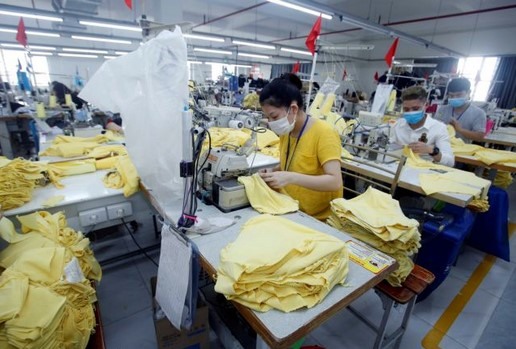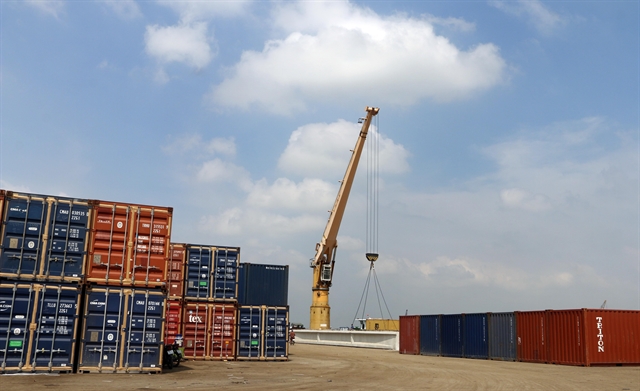
Đặng Hoàng Hải, head of Việt Nam’s e-Commerce and Digital Economy Agency under the Ministry of Industry and Trade, talks to Vietnam News Agency about IT application in trade activities to link e-commerce with traditional commerce.
E-commerce platforms have become primary transaction channels of businesses and the community during COVID-19 pandemic. What has the Ministry of Industry and Trade (MoIT) done to create favourable conditions for businesses in e-commerce activities?
People tend to select online shopping during pandemic instead of traditional methods. This has boosted the development of e-commerce.
During the pandemic, many traders, organisations and individuals have made profit from stocking up on and hiking up prices of face masks, hand sanitisers and other items.
The MoIT has asked e-commerce platform managers to verify and remove fake products as well as impose strict penalties on those who hiked up prices.
Platforms like Sendo.vn, Shopee.vn, Chotot.com, Lazada.vn, Tiki.vn and other websites have collaborated with the e-Commerce and Digital Economy Agency (iDEA) to warn the people against taking advantage of the pandemic to increase prices and cause market instability.
As of April 8, e-commerce platforms and websites punished about 16,800 online stores.
The MoIT has also warned people and enterprises about fraud as well as production and smuggling of poor-quality medical masks without clear origin.
In order to strengthen business assistance, the ministry has officially announced the promotion of online shopping activities during the pandemic.
We have ordered websites and e-commerce trading floors to promote online shopping activities to meet public demand.
The platforms should prioritise the display of pandemic preventive products and necessity items so that people can easily get access and buy them.
E-commerce platforms must regularly check and review price listings to prevent and eliminate infringing products and booths.
The ministry has co-ordinated with e-commerce platforms in Việt Nam to promote the consumption of Vietnamese goods and agricultural products.
The MoIT has asked the iDEA to formulate a project to promote e-commerce in the context of pandemic from State resources.
The project will focus resources to support two main groups: consumers and businesses.
The ministry has also developed a website at hanhdong.moit.gov.vn to update the ministry's activities in response to COVID-19.
Do you think the boom of e-commerce is only temporary during the COVID-19 pandemic or could we see a new trend of safe and effective shopping?
Over the past few years, along with the development of science and technology, many new solutions and business models based on technology platforms have boomed, gradually forming a digital economy in Việt Nam.
This digital economy has a very profound impact on growth efficiency and economic structure, labour structure as well as created big changes in the working environment and economic activities.
E-commerce is considered to be the most vibrant development sector in Việt Nam’s digital economy market and has become an indispensable tool for businesses to expand their activities and improve their competitiveness.
In recent years, the e-commerce growth rate has reached 25 to 30 per cent per year. In 2019 alone, Việt Nam's e-commerce growth rate reached 27 per cent with total e-commerce retail revenue of US$13 billion.
When COVID-19 has not been completely overcome, many economic sectors have been adversely affected. Therefore, e-commerce has been an indispensable trend in commercial transactions, gradually changing consumption habits and business methods of enterprises.
Could you share detailed targets of the general plan on national e-commerce development during 2021-25 period that has been submitted to the Government?
The MoIT has set the target that by 2025, 55 per cent of the population will shop online, with the average value of online goods and services of $600 per person each year.
The ministry also aims at 50 per cent of cashless payment in e-commerce activities and 70 per cent of website or apps having electronic invoices, as well as building and putting into operation the shared database on e-commerce.
The MoIT proposed provinces and cities, except for Hà Nội and HCM City, own 50 per cent of e-commerce platforms nationwide.
About 50 per cent of communes and equivalent administrative units across the country will have traders active online.
There will be 50 per cent of small and medium-sized enterprises conducting business activities on e-commerce trading floors, including social network with function of e-commerce trading floors.
Seventy per cent of electricity, water, telecommunications and communication service providers have electronic contracts with consumers.
Many say the management of e-commerce activities has been loosened without strict penalties. What regulations are needed to better manage e-commerce and stiffen penalties on violating people?
To fight against fake and low-quality products, the MoIT has implemented plans and completed legal and institutional framework for e-commerce management.
The ministry has also stepped up inspection and handling of violations as well as strengthened law dissemination, addressed online complaints and improved the capacity of law enforcement on e-commerce.
We have also conducted training for State management officials on e-commerce.
In order to effectively and thoroughly solve the problems, we need close co-ordination between police, banks, customs, information and communication agencies and other State management agencies to strengthen management on each group of goods to fight against frauds and infringing intellectual property rights. VNS































